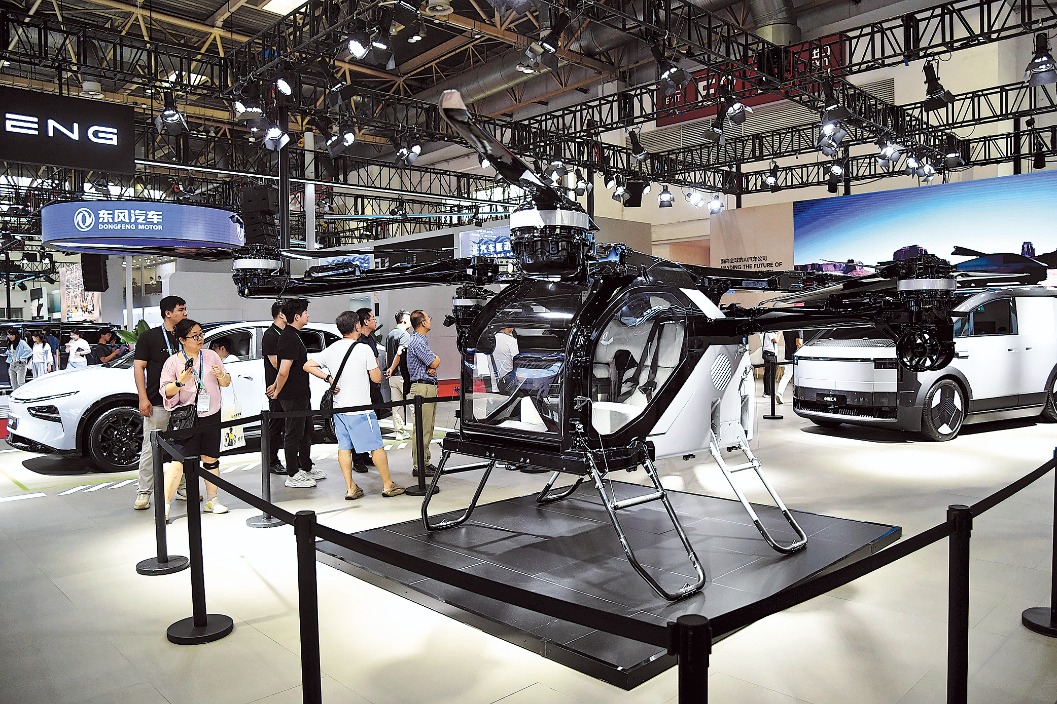Out of cocoon, will Huawei fly higher?


A white butterfly brooch on the black dress of Meng Wanzhou, chief financial officer of Huawei Technologies Co, caught the eyes of many as she made her first public appearance on Monday after returning to China from Canada last year.
The signal seems clear. After hardship, a cocoon transforms into a butterfly, a symbol of rebirth and hope, as well as for the triumph of the spirit.
The butterfly could represent Meng, but also offered a peek into Huawei, which has been struggling for survival and growth for three years, after Washington restricted its access to crucial US chipmaking technologies, software and components in 2019.
Meng said at the company's financial report news conference in Shenzhen, Guangdong province, on Monday that "Huawei has passed the blackout zone".
Blackout zone is typically used to describe locations where monitoring devices and cellphones are ineffective and often malfunction.
"In the past three years, our team has become more united and our strategy has become clearer. Facing the future, we will increase investment in research and development and talent to ensure our continuous innovation ability," Meng said.
Huawei's 2021 revenue recorded a nearly 29 percent decline to 636.8 billion yuan ($100 billion). That is in large part due to plummeting sales of its smartphones and PCs, a result of chip supply challenges under US government restrictions.
But its profitability has surged. Huawei recorded a full-year 2021 net profit of 113.7 billion yuan, up almost 76 percent year-on-year, on better profitability linked to the sale of certain businesses, including the smartphone brand Honor.
Excluding such sales, Huawei's net profit margin still improved in 2021 as the profitability of its main businesses rose while operating costs fell, Meng said.
Looking into the future, Huawei's efforts to seek new revenue growth in promising businesses including smart car technologies, cloud computing, digital energy solutions and enterprise-oriented businesses, will be key to seeing whether the Chinese tech heavyweight can emerge from the prolonged restrictions to be more innovative and competitive.
By leveraging its decades-old R&D advantages in information and communications technology, Huawei is now ratcheting up efforts to find new opportunities in automobiles, which are becoming increasingly electrified, connected and smarter.
Highlighting that it will not make cars itself, Huawei said it has adopted two approaches to help car-makers better embrace connectivity and intelligence.
The first is selling smart car components and technologies to automobile companies. Huawei said its smart car business unit now has 5,000 R&D staff, and has developed more than 30 smart car components as well as teamed up with more than 300 upstream and downstream automobile supply chain partners.
The second is a deeper level of cooperation with car companies. Huawei offers a full suite of smart car technologies named Huawei Inside to carmakers, and its sprawling offline retail stores are used to showcase and sell these cars to consumers who resonate with the Huawei brand.
Yu Chengdong, CEO of Huawei's consumer business group, said in January that Huawei will challenge the goal of helping carmakers sell 300,000 units of cars this year, which could generate annual sales revenue of 100 billion yuan for automobile companies that partner with Huawei.
Huawei's ambitions in the smart car business showcase its resilience amid challenging times. The company is also working aggressively to grow its prowess in cloud computing.
Huawei Cloud's revenue exceeded 20.1 billion yuan, marking a year-on-year increase of 34 percent. It is now the fifth-largest player in the global market of IaaS or Infrastructure as a Service, a public cloud computing segment, said market research company Gartner Inc. Huawei plans to be among the top three.
Undoubtedly, long-term R&D investment in these areas is needed to support growth. Last year, Huawei's R&D hit 142.7 billion yuan, a record high despite all the difficulties it has faced. Huawei's R&D spending over the past decade reached 845 billion yuan.
Meng said the biggest wealth of Huawei lies in its talented people. Huawei now has over 107,000 employees engaged in R&D work, accounting for over half of its total staff members. This year, Huawei will continue recruiting more than 10,000 fresh university graduates.
"Only by attracting more outstanding talent can we solve Huawei's current difficulties," said Guo Ping, the rotating chairman of Huawei.





































